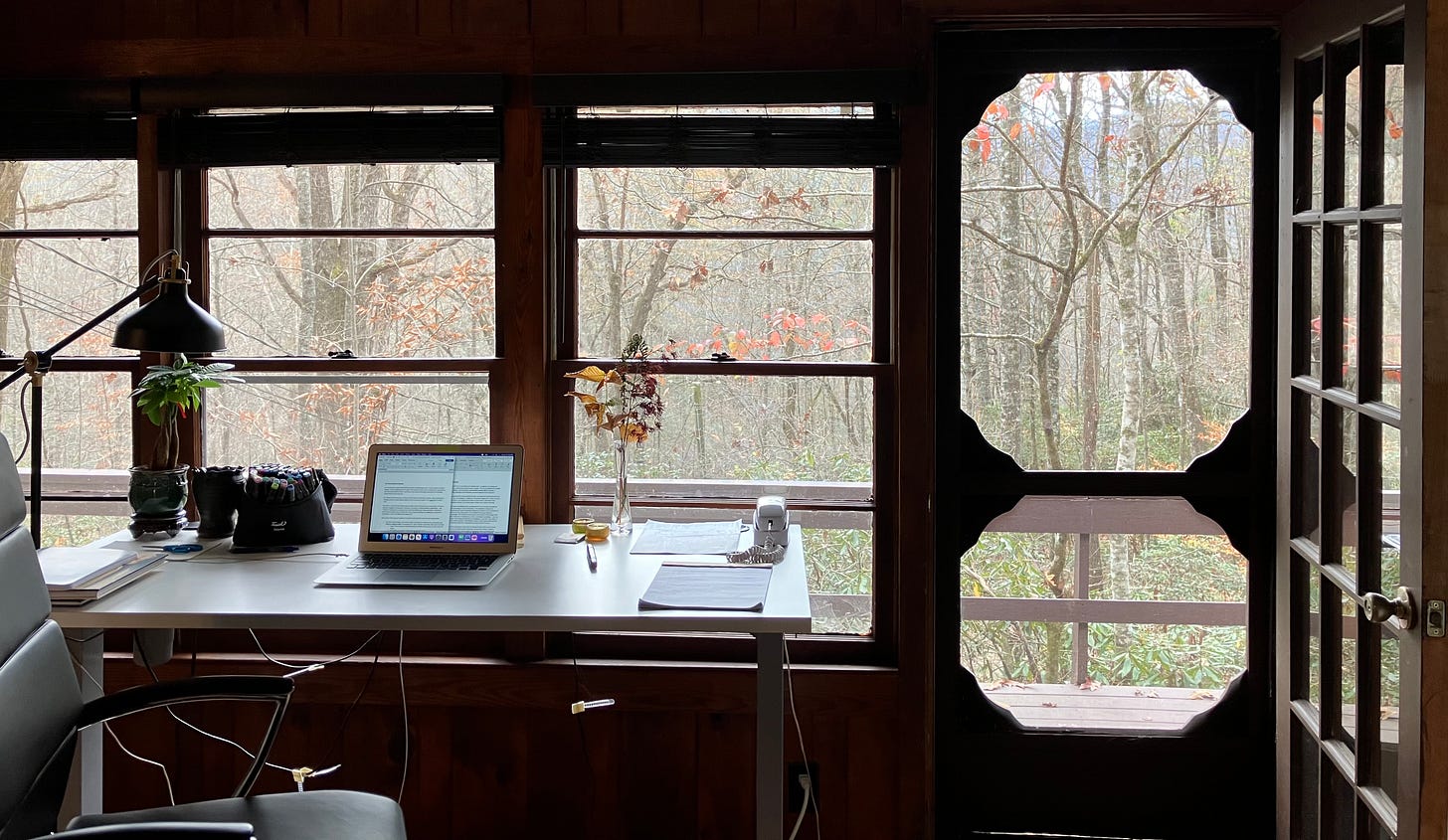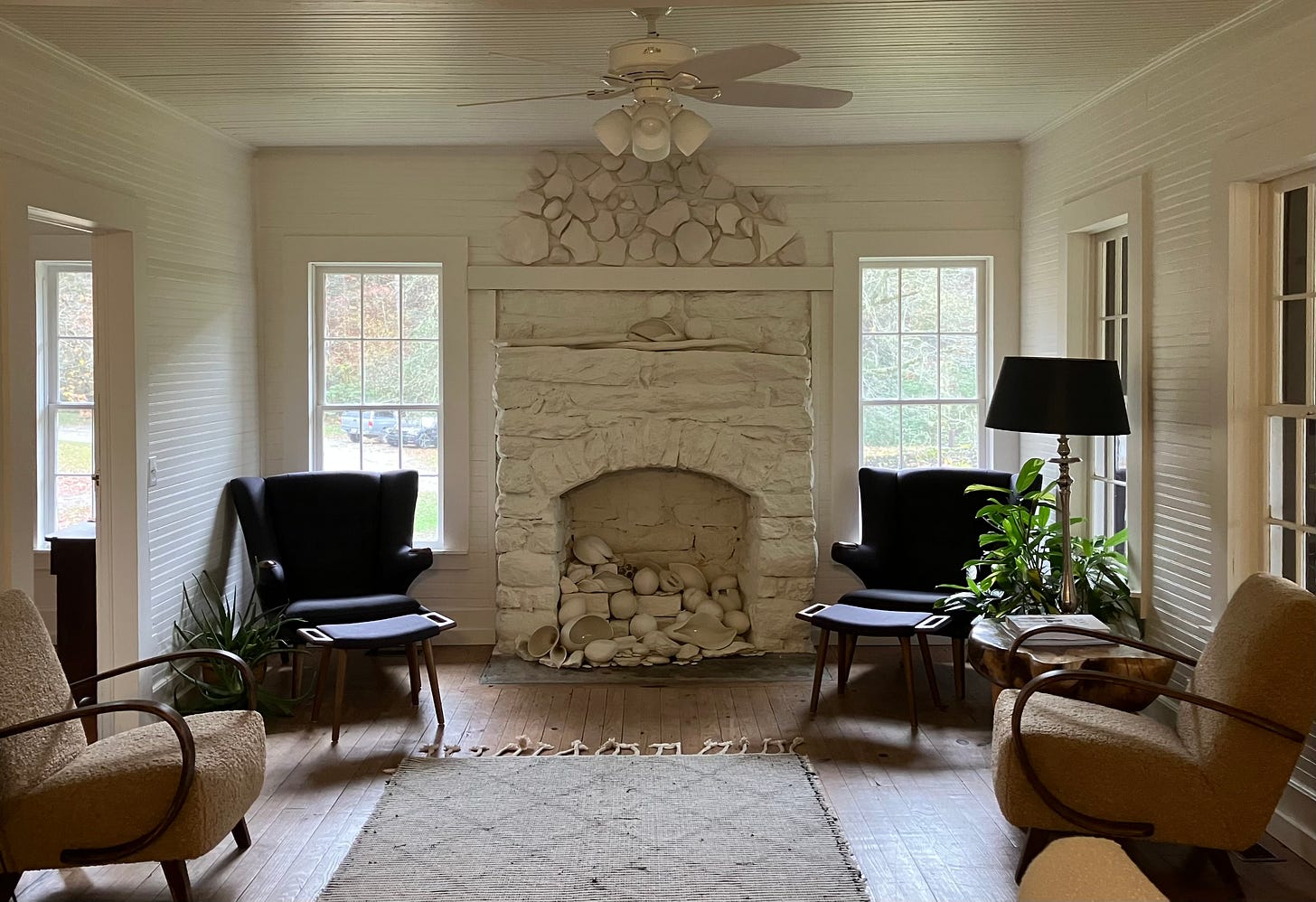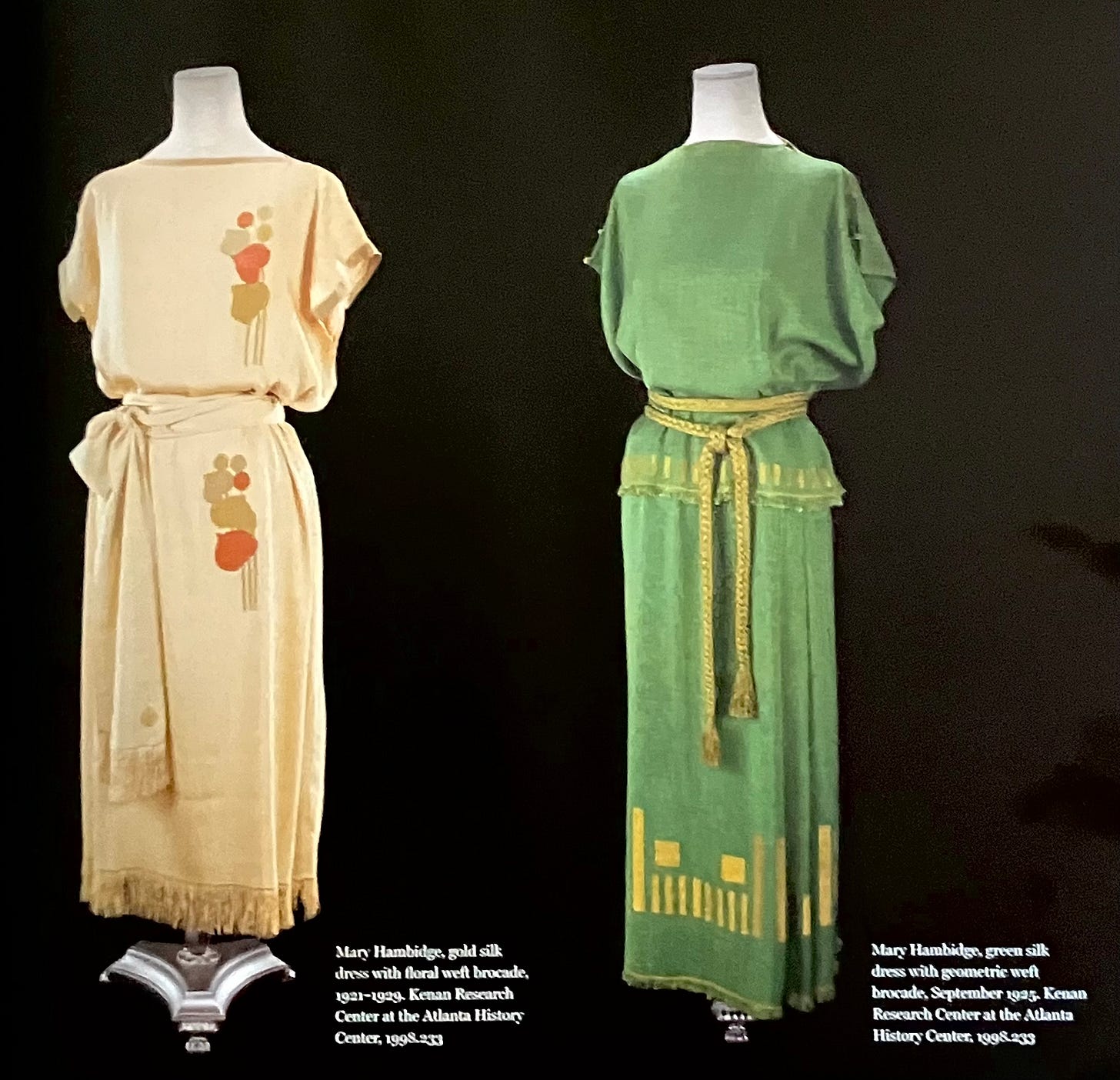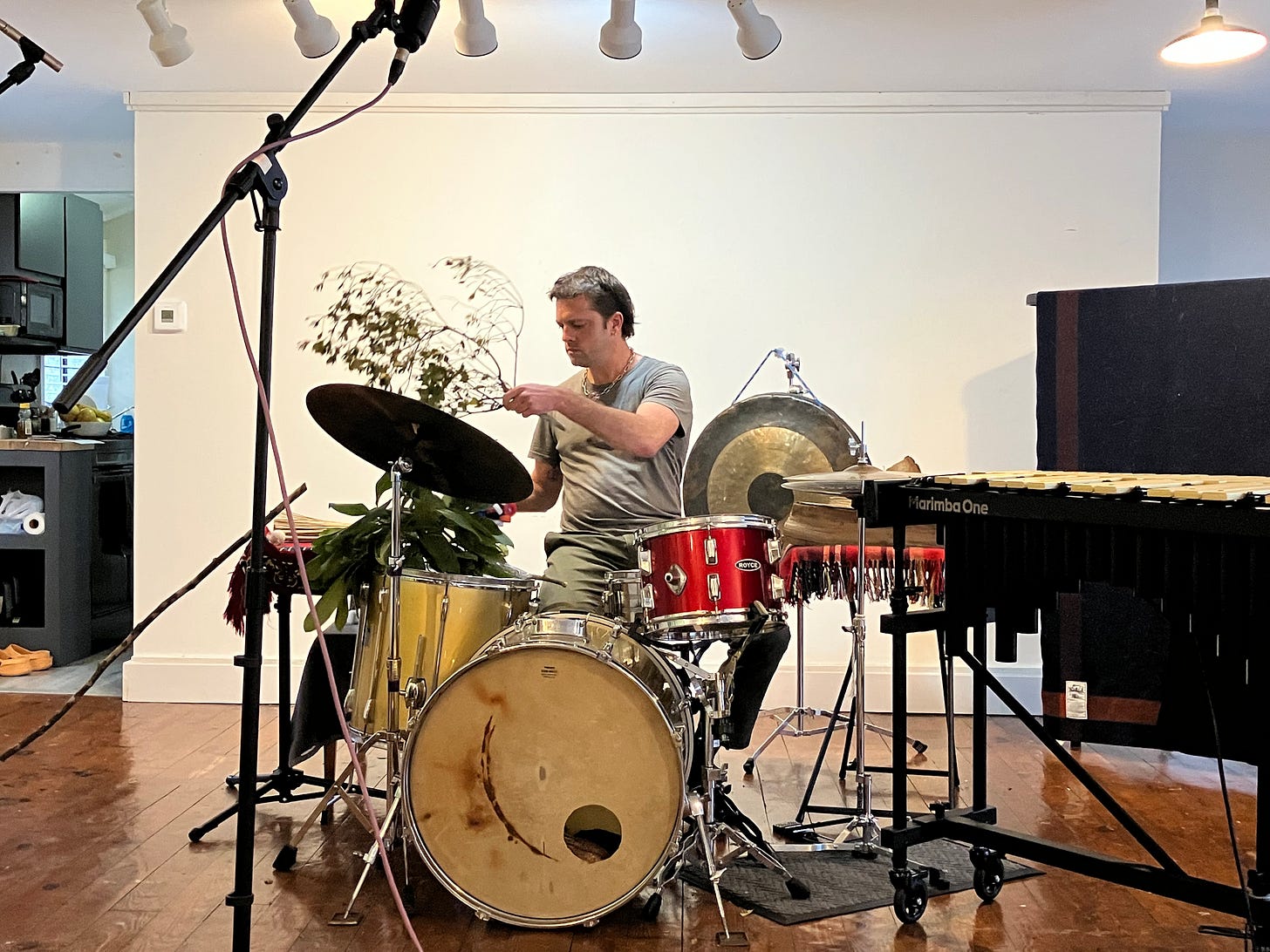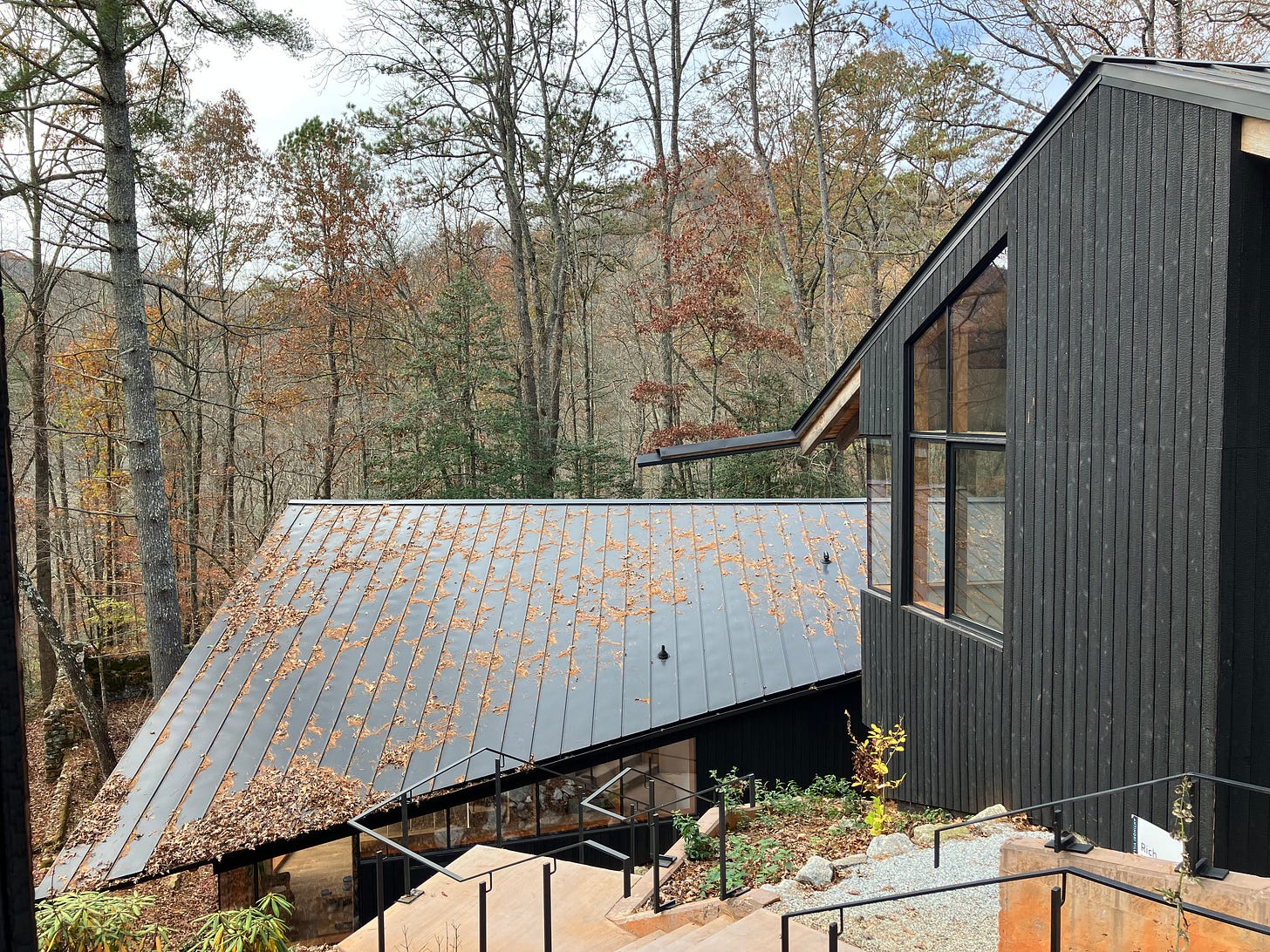Hambidge Center: Where Creativity and Nature Converge
Unless creative work is solidly built into a mother’s paid job, I think I speak for many, and certainly other single moms, when I say one of the first things to go with scarce time and resources is the pursuit of creative endeavors. As a writer who also dabbles in other art forms, it wasn’t until my daughter began her second semester of college last year that I was really able to dip my toes back into creative work. The same can be said for making time to deeply commune with nature.
So last November, when I had the privilege of accepting a one-week writing residency at Hambidge Center, a 600-acre creative sanctuary in the North Georgia mountains, I felt like I had won the lottery. For one week, I holed up in a rustic cabin, writing and processing emotions about navigating Hurricane Helene as an Asheville River Arts District resident, having to rehome my beloved dog, my unexpected pending move to Atlanta, and the election, which took place during my stay. It was the first time post-hurricane that I finally had space and privacy to write, cry, and decompress.
Focused time away from the responsibilities and distractions of daily life is a gift to creatives in general, regardless of life circumstances, and this is primarily why artist residencies exist. Providing a novel space that supports our craft helps spark fresh ideas, inspiration, and new energy. Residencies can also provide access to a dedicated and larger work space, specialized equipment, such as pottery wheels, and collaboration with other artists in residence. They also function like retreats and tend to be healing and nurturing, especially if they’re nature-based.
While I knew my time at Hambidge would be cathartic, partially because WiFi was only available by walking five minutes through the woods to the main lodge, I didn’t realize just how beautiful and accommodating the campus would be. I was assigned to the perfect cabin for a nonfiction writer – the Foxfire, a cabin built for the publisher of Appalachia’s Foxfire publications, complete with a fireplace, forest-facing desk, and huge deck. It was everything I needed during my stay and more.
I had mixed feelings about the framed Flannery O’Connor quote near the desk but came around to appreciate its presence. I hadn’t heard the quote before, but it was almost identical to what I used to explain to close friends and family: “I write because I don’t know what I think until I read what I say.” Unfortunately, O’Connor was deeply racist (not just “for her time”); and her views, writing, and actions only became more bigoted over the years. Nevertheless, I was in Georgia and she was from there, and the framed quote had probably been there since the cabin was built in the 1960s. Moreover, the presence of her name pushed me to do what I do – research her views more in depth and write about them. Alice Walker, one of my favorite authors, grew up in Georgia, too, not far from O’Connor, actually. Since cultural inclusion is strongly important to Hambidge staff, I wouldn’t be surprised if there’s a framed Walker quote in another Hambidge building.
After peeling myself away from my desk and out of my pajamas each morning, I spent a lot of time walking through the forest. Hiking miles of trails and stumbling upon art installations in the woods was a magical way to take breaks from indoor writing. I was strongly draw to the art of Rachel Garceau, whose white clay installations grace the main lodge as well some outdoor places around campus. I found myself returning to her works repeatedly to share space with them.
On my second day, as I wrote A Call to Common Ground the day after the election and conceived the idea of an Art as Common Ground project, I was visited by a hawk. The morning of day five, as I wrote and cried about rehoming my sweet dog, Kaia, I was visited by a male deer. I was so grateful for its presence, I talked to it gently for a while. Surprisingly, it stayed and listened. I then wished it a happy day and left, and it did, too.
The mix of solitude and community was ideal, including the staff-led hike along Betty’s Creek one sunny afternoon. Popping into the rustic main lodge with contemporary art installations often led to spontaneous chats with other residents. We also gathered together each night for a healthy dinner cooked by the Hambidge chef. On our last night, most of us drove into town for BBQ and let loose over a nighttime hang at one of the cabins. When I needed a brief change of scenery mid-week, I drove 15 minutes into the quaint town of Clayton and wrote at the friendly White Birch Provisions coffee shop and market.


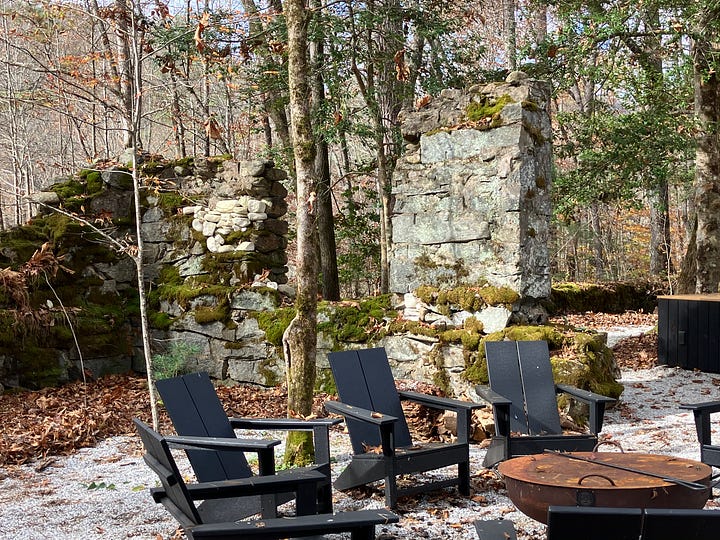

Dynamic Greek Symmetry
The most surprising thing about my stay was the campus’s intriguing history, which I hadn’t had time to research prior. The campus was founded in the 1930s by a woman – Mary Crovatt Hambidge, a notable weaver whose work was inspired by a trip she and her husband, Jay, took to Athens in 1920–21.
Jay was so inspired by classical Greek design that he pivoted his career in illustration and art journalism to originate the concept of “Dynamic Symmetry,” which linked patterns in nature, such as the arrangement of leaves on a stem, to mathematical and geometric formulas, akin to Leonardo da Vinci and Buckminister Fuller’s work. He dedicated his career to teaching artists a mathematical framework for achieving proportionally balanced compositions across a variety of media, and his 1920 book Dynamic Symmetry: The Greek Vase and Virginia Gardner Troy’s book Dynamic Design both chronicle his contributions.
“That was the secret of Greek culture, that they kept their touch with nature and the soil and all the simple things of life . . . it keeps you real.” –Mary Hambidge
Mary was equally enamored with classical Greek design, and it was in Athens where she learned to weave after connecting with expat women who were helping revive the ancient art of handweaving. She also started dressing in self-made Greek-inspired clothing.
When she returned to Georgia, she visited the mountains and learned about Appalachian weaving traditions. In the late 1930s, after Jay had passed, she founded the Hambidge Center in Rabun Gap, along with the Weavers of Rabun handwoven fabric production workshop there at the Center. Their wares were featured in a MOMA exhibition, and they won a gold medal at the Paris World’s Fair. Mary also opened a New York retail shop, which flourished until handwoven fabric declined with the industrial revolution.
In her book, Troy writes, “Mary is credited with creating one of the earliest artist communities in the South and with reviving and invigorating Greek and Appalachian weaving traditions. …[She] sought to create a retreat where art and agriculture were practiced in balance, as she believed had occurred in ancient Greece. ‘I think that was the secret of Greek culture, that they kept their touch with nature and the soil and all the simple things of life . . . it keeps you real,’ she stated.’”
Diverse Artistic Mediums
Hambidge offers residencies for artists of practically all mediums, including writers of fiction, non-fiction, and poetry, dancers, musicians, ceramicists, painters, sculptors, a variety of other visual artists, and more.
Given the Center’s rich textile history, Hambidge was an apropos place to meet one of my now-favorite contemporary artists, Honey Pierre. Also based in Atlanta and in residence the same week as I was, I looked up her art after hitting it off with her personally and was blown away. Her textile artworks are boundary breaking. Pierre creates large tapestries that, from a distance, look like colorful paintings. Through them, she shares narratives of everyday people in everyday life. Her website describes her work better than I ever could, and I encourage you to visit it directly to view her work and read about it in her own words.
Another artist that meaningfully caught my attention was musician Chris Childs, also based in Atlanta. Chris gifted us with an impressive musical performance at the end of our week that integrated found branches and leaves from the Hambidge campus into his improvisational music, demonstrating yet another way a creative residency in nature can influence an artist’s craft. Evoking memories of Twin Peaks and other references, his experimental style defies genres.
Hambidge accommodates eight residents at a time from diverse artistic disciplines and from around the U.S. New York novelist Tonya Shenandoah’s reading on our last day was so moving it brought me to tears. We got to view and touch the wonderful book crafts of Lydia Harris from Massachusetts, witness West Virginian Robin Ha’s foray into collage, an experimental departure from her award-winning cartoon work, and see Atlantan Katie Hayes’ abundant ceramic creations. I left midway through Atlanta poet Mason Wray’s residency so didn’t get to hear him read but was grateful to meet him.
Once a fellow at Hambidge, you’re permanently part of the Hambidge family and invited to special events. Next weekend, I’m attending a hike for fellows in Atlanta’s Bamboo Forest.
Supporting Hambidge
If you’re curious about Hambidge, whether as a creative or supporter of the arts, the annual Art Auction and Masquerade each October in Atlanta is a fun way to become acquainted with the community. Featuring 200 emerging and established artists in a silent auction on top of a fantastic party, free artist-led Mask-Making Fun Labs are also held around the city for two weeks prior.
If you’d like to experience the beauty of Hambidge in Rabun Gap, the Center’s Antinori Village offers three-, five-, and twelve-day workshops by notable chefs, ceramists, and other makers, as well as special one-night events. Monthly tours are also offered of the campus’s historic Grist Mill. All events and workshops support residencies and artists that contribute to the campus. Hambidge is a non-profit, so there are many ways to support the organization, including through tax-deductible donations.
For more information, please visit hambidge.org.
All photography taken by April Economides.




